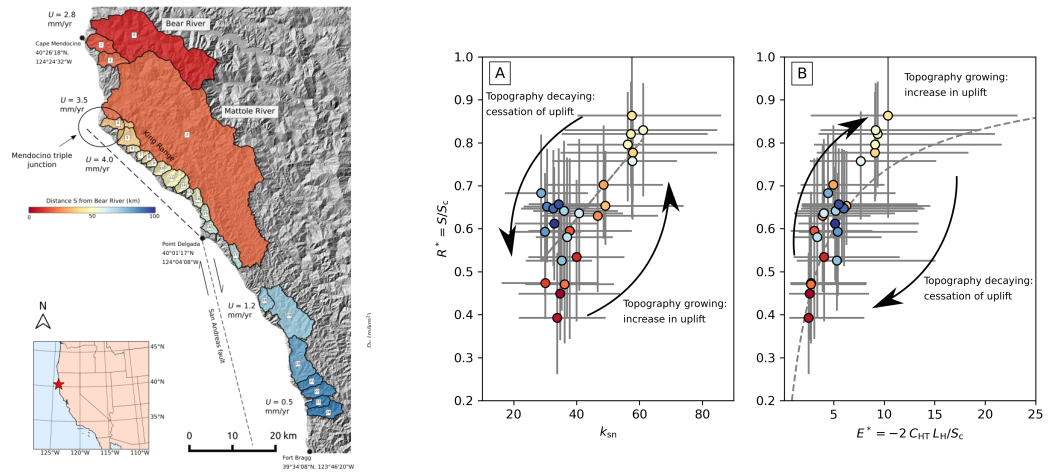Hillslopes and channels record a migrating uplift field
In this paper we looked at the pattern of hillslope-channel coupling along the Mendocino Triple Junction, where we know that an uplift field is migrating north. We find a lag between hillslope properties and channel properties, and use this to trace the migration of the uplift field. Although scientists have known about this migration for some time, this is the first study that shows it can be traced using topographic data alone.
Publication
Differences in channel and hillslope geometry record a migrating uplift wave at the Mendocino Triple Junction
Abstract
Tectonic plate motion, and the resulting change in land surface elevation, has been shown to have a fundamental impact on landscape morphology. Changes to uplift rates can drive a response in fluvial channels, which then drives changes to hillslopes. As hillslopes respond on different timescales than fluvial channels, investigating the geometry of channels and hillslopes in concert provides novel opportunities to examine how uplift rates may have changed through time. Here we perform coupled topographic analysis of channel and hillslope geometry across a series of catchments at the Mendocino Triple Junction (MTJ) in Northern California. These catchments are characterized by an order of magnitude difference in uplift rate from north to south. We find that dimensionless hillslope relief closely matches the uplift signal across the area and is positively correlated with channel steepness. Furthermore, the range of uncertainty in hillslope relief is lower than that of channel steepness, suggesting that it may be a more reliable recorder of uplift in the MTJ region. We find that hilltop curvature lags behind relief in its response to uplift, which in turn lags behind channel response. These combined metrics show the northwards migration of the MTJ and the corresponding uplift field from topographic data alone.
